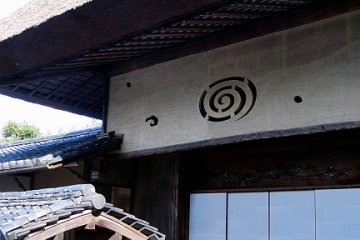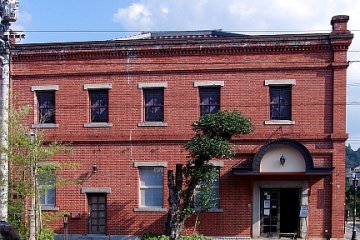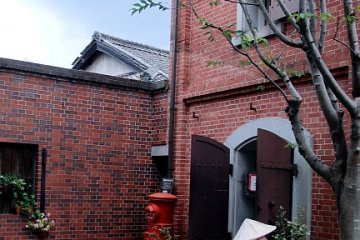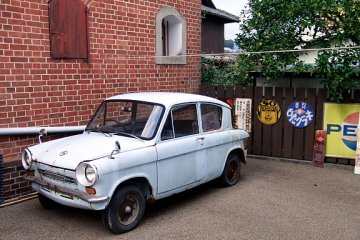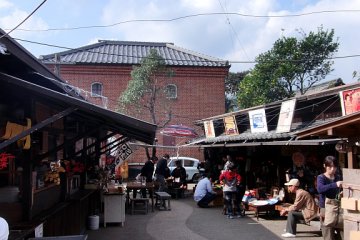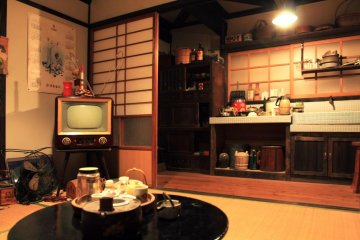Placed strategically between Ozu Castle and the Garyu Sanso hermitage sits the Akarengakan, a squat red-brick building that was originally a bank. Among the wood and plaster buildings typical of Ozu, this English-style building seems totally out of place when you first come upon it around a corner. Not that it’s a bad thing, because it’s an attractive building, and something of a rarity in Japan.
The ground floor houses a shop selling locally made candles, ceramics, pictures and other mementos at reasonable prices. There’s a pleasant courtyard with trees and benches next to a sturdily built section that used to function as the strongroom of the bank. In here you can find a strange exhibit of brick making around the world. Other rooms serve as a little museum featuring old movie cameras and model trains with a levy of 200 yen for adults, children 100 yen.
Next to the Akarengakan is a little herb garden with signs to something called the Pokopen Yokocho. As you round the corner at the back of the old bank, there’s another surprise when you find yourself in a cross between a movie set, a restaurant, an antique shop and a museum. Pokopen Yokocho is a tiny area that recreates the atmosphere of the Showa period, known to the outside world as the reign of the emperor Hirohito. Showa has a special place in the Japanese psyche. Why this should be so would be hard to say but it might be that old Japan existed side by side with the seeds of today’s society, in what may seem in retrospect to have been an ideal balance. Oddly enough, people from outside Japan can enjoy wallowing in this nostalgia too. I take every opportunity I can to enjoy the dusty plastic or tin artifacts that remain from that time. Pokopen Yokocho presents a fine opportunity to experience the charm of Showa. There are countless enamel advertising plates displayed on the fence and a number of old vehicles that present a very dinky aspect. Here you can sit at the benches to eat from the stalls offering ramen, frankfurters and other quick food. This complex is a good place for a casual lunch when the weather’s warm. Otherwise, Aburaya across the road is highly recommended.
As if Pokopen Yokocho wasn’t enough Showa era nostalgia, there’s also the Omoide Soko, the Storehouse of Memories, a restored warehouse full of mementos from the period, with complete reconstructions of old shops and a typical home (admission a very reasonable 200 yen for adults, 100 yen for children). Allow plenty of time!






